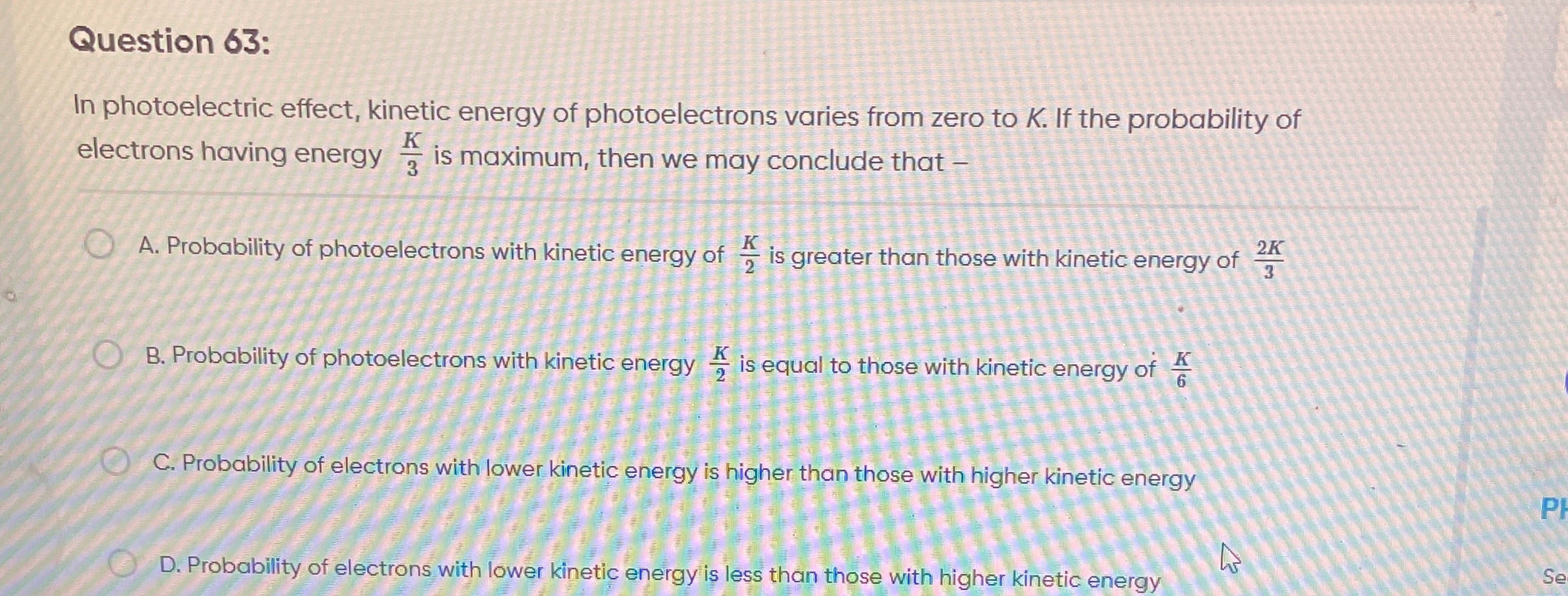Question
Question: In photoelectric effect, kinetic energy of photoelectrons varies from zero to K. If the probability ...
In photoelectric effect, kinetic energy of photoelectrons varies from zero to K. If the probability of electrons having energy 3K is maximum, then we may conclude that –

Probability of photoelectrons with kinetic energy of 2K is greater than those with kinetic energy of 32K
Probability of photoelectrons with kinetic energy 2K is equal to those with kinetic energy of 6K
Probability of electrons with lower kinetic energy is higher than those with higher kinetic energy
Probability of electrons with lower kinetic energy is less than those with higher kinetic energy
Probability of photoelectrons with kinetic energy of 2K is greater than those with kinetic energy of 32K
Solution
The kinetic energy of photoelectrons, Ek, ranges from 0 to K. The probability of electrons having kinetic energy 3K is maximum, meaning the probability density function P(Ek) has a peak at Ek=3K. For a unimodal distribution, values closer to the peak have a higher probability density.
Let's analyze the distances of the given kinetic energies from the peak energy 3K:
-
For kinetic energy 2K: Distance from peak = ∣2K−3K∣=∣63K−2K∣=6K.
-
For kinetic energy 32K: Distance from peak = ∣32K−3K∣=∣3K∣=3K.
Since 6K<3K, the kinetic energy 2K is closer to the peak energy 3K than 32K. Therefore, the probability density at 2K is greater than the probability density at 32K. This makes option A correct.
Option B compares P(2K) and P(6K). Distance of 6K from the peak energy 3K is ∣6K−3K∣=∣−6K∣=6K. Both 2K and 6K are equidistant from the peak. However, without information about the symmetry of the probability distribution, we cannot conclude that their probabilities are equal. Thus, option B is not necessarily true.
Options C and D suggest that the probability is strictly decreasing or strictly increasing with kinetic energy, respectively. This contradicts the given information that the probability has a maximum at 3K. Therefore, options C and D are incorrect.
